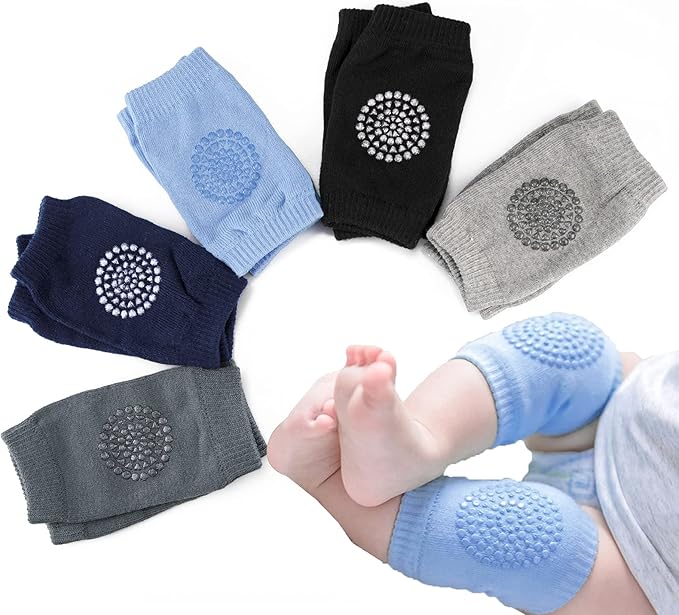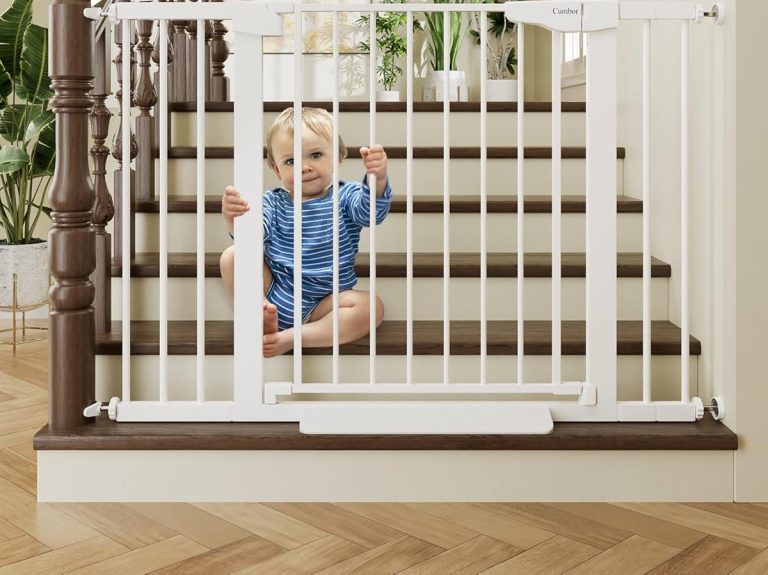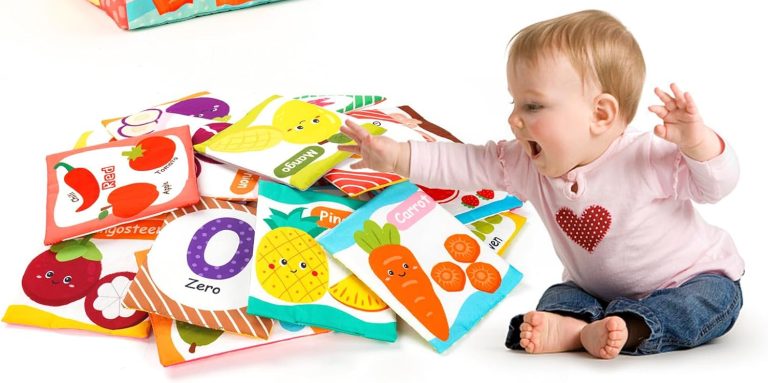Do Babies Have Kneecaps? The Surprising Truth About Infant Knees
Introduction
It’s a surprisingly common question among new parents, caregivers, and even curious older siblings: do babies have kneecaps? The short answer is yes — but they’re not exactly the same as the bony kneecaps adults have. At birth, a baby’s kneecaps are made entirely of soft cartilage, which is nature’s way of giving those tiny legs extra flexibility and protection during the early months of life. This fascinating detail explains so much about how babies move — from their adorable, wobbly crawl to the way their legs bend and twist so effortlessly. It also sheds light on why babies seem so resilient when they tumble and bump around while learning to sit, crawl, and walk.
In this guide, we’ll take a closer look at the science behind kneecap development, why babies are born with cartilage instead of bone, and how this gradual hardening process — called ossification — supports safe, healthy growth. You’ll also learn what this means for baby movement, crawling milestones, and joint health as they grow into toddlers.
Do Babies Really Have Kneecaps?
Yes — babies absolutely have kneecaps, but they’re quite different from the ones adults have. At birth, instead of solid bone, a baby’s kneecaps are made entirely of cartilage, a soft, flexible tissue that’s perfect for their developing bodies.
This cartilage serves several important purposes. First, it acts as a cushion, absorbing impact as babies kick, crawl, and eventually take their first steps. Second, it provides greater flexibility, allowing a baby’s legs to bend and twist more easily — an advantage for all the wiggling, rolling, and crawling that happens in the first year.
Over time, this cartilage undergoes a natural transformation called ossification, where it gradually turns into bone. This process usually begins between 2 and 6 years of age, although the exact timing can vary from child to child. By the time kids are older, those once-soft kneecaps have become the familiar, bony structures that help protect the knee joint and provide leverage for powerful movements like running and jumping.
This development is completely normal and is one of the many ways babies are biologically designed to handle the unique challenges of early life. Their flexible kneecaps, combined with soft bones and stretchy ligaments, make them surprisingly resilient during falls and tumbles as they learn to move.
When Do Kneecaps Develop in Babies?
The development of kneecaps is a gradual, fascinating process that takes years to complete. Babies aren’t born with the hard, bony kneecaps adults have — instead, they start with cartilage kneecaps that are perfectly suited for early life. Here’s what the typical timeline looks like:
At Birth:
A newborn’s kneecaps are made entirely of soft cartilage. This is why they don’t appear clearly on X-rays, leading to the common myth that babies are “born without kneecaps.” The cartilage acts as a cushion, making crawling, kicking, and those adorable baby squats easier and safer.
Ages 2–6 Years:
Between about 2 and 6 years of age, ossification centers — the starting points where cartilage turns to bone — begin to appear. During this stage, the kneecaps are still partially soft but are slowly becoming more rigid. This gradual hardening matches a child’s increasing mobility as they start running, climbing, and jumping, giving their knees the stability they need without losing all flexibility.
By Adolescence:
By the time a child reaches their teenage years, the kneecaps are fully formed bones. At this point, they function just like adult kneecaps, providing a stable anchor for the leg muscles and supporting high-impact activities like sports, dancing, and cycling.
This slow and steady progression is nature’s way of protecting growing bodies. Soft kneecaps in infancy help absorb shock and prevent injury during falls, while the gradual hardening ensures children develop strong, stable knees at the right pace for their level of activity.
Recommended Products for Happy, Healthy Knees
Keeping your baby comfortable and supported as they grow doesn’t have to be complicated. These highly rated essentials can help protect soft kneecaps, encourage movement, and make milestone moments safer and more fun.
🛋 Extra-Thick Foam Play Mat
Give your baby a soft, cushioned surface for crawling, rolling, and playing. A non-toxic, easy-to-clean play mat can reduce knee irritation, absorb impact from tumbles, and create a dedicated play zone. Look for options with interlocking tiles or foldable designs for easy storage. Buy on Amazon
🧦 Soft Baby Knee Pads
Protect those delicate knees from hard floors with stretchy, breathable knee pads designed for crawlers. They’re perfect for hardwood, tile, or outdoor playtime and can prevent red marks or rug burn. Many come in multipacks so you can keep a pair handy in the diaper bag. Buy on Amazon
🍼 Foldable Baby Play Gym
Encourage tummy time and early movement with a colorful play gym. Hanging toys engage babies’ curiosity, while the soft mat supports muscle development. Choose one that’s machine washable and grows with your baby (removable toys, adjustable height). Buy on Amazon
👖 Stretchy Crawling Leggings
These are a cute and practical solution for babies who love to scoot around. Padded or reinforced knee leggings provide extra comfort, protect against scrapes, and keep little legs warm on cooler floors — all while being stylish enough for photos! Buy on Amazon
🧸 Push Walker Toy
Once your baby is ready to take those first steps, a sturdy push walker can build confidence while strengthening their leg muscles. Look for models with wide wheels and stable bases for safety. Bonus: many double as activity centers for added playtime value. Buy on Amazon
Why Are Baby Kneecaps Made of Cartilage?
There’s actually a good reason babies aren’t born with hard, bony kneecaps. In fact, having kneecaps made of cartilage is an evolutionary advantage that helps babies safely navigate the earliest, most vulnerable stage of life. Here’s why:
1. Flexibility for Birth
A cartilaginous kneecap is soft and pliable, which makes it easier for babies to pass through the birth canal. Newborns are designed with multiple flexible joints — even their skull bones aren’t fully fused — to make delivery safer for both baby and parent.
2. Crawling Comfort
Once babies start crawling, those soft kneecaps act as natural shock absorbers. They cushion the knees against hard surfaces, preventing pain and reducing irritation as babies scoot and explore. This is why many babies can crawl happily on tile or wood floors without discomfort.
3. Injury Prevention
Falls are a normal part of learning to sit, crawl, and walk. Soft, cartilaginous kneecaps help absorb impact and lower the risk of serious injury or fracture. A fully ossified (bony) kneecap in a newborn would be far more susceptible to cracks or breaks from even minor tumbles.
4. Greater Mobility and Adaptability
Cartilage gives babies incredible flexibility — allowing them to bend, squat, and sit in positions that would be uncomfortable for most adults. This extra mobility supports key milestones like crawling, sitting cross-legged, and eventually standing.
5. Gradual Strength Building
By staying soft for the first few years, kneecaps adapt to the baby’s growing muscles and changing gait. As babies get stronger, the kneecaps slowly ossify into bone, providing just the right amount of strength at just the right time.
In short, soft kneecaps aren’t a weakness — they’re a clever biological design that makes early growth safer and more comfortable.
How Kneecap Development Affects Baby Movement
A baby’s soft, cartilaginous kneecaps aren’t just an anatomical curiosity — they play a key role in motor development during the first few years of life. This unique design supports safe movement while helping babies build strength and coordination.
Crawling:
Those cartilage kneecaps act like tiny built-in shock absorbers, protecting the knees from the bumps and scrapes that come with crawling across hard floors. Interestingly, this is one reason you might notice different crawling styles — some babies crawl on their knees, while others prefer “bear crawling” on hands and feet. Babies with more sensitive knees may instinctively choose the latter because it keeps their cartilage kneecaps off the ground, reducing discomfort on rough or cold surfaces.
Pulling Up and Cruising:
As babies transition from crawling to pulling themselves up on furniture, their kneecaps continue to provide cushioning and flexibility. This helps them bend and straighten their legs with ease, which is essential for learning to balance and shift their weight safely.
Walking:
When ossification begins (usually between ages 2 and 6), the kneecaps gradually provide more stability for the knee joint. This added firmness makes walking, running, and climbing easier as toddlers gain confidence and coordination. Stronger, more structured kneecaps work with developing leg muscles to support upright movement.
Flexibility and Range of Motion:
Because kneecaps start soft, babies have a remarkable range of motion in their joints. This is why they can sit in positions like the “W” sit or fold their legs under them so easily. Over time, as kneecaps harden into bone and ligaments tighten, their movement becomes more like that of adults — still flexible, but less extreme.
Overall, kneecap development ensures that babies can move freely, safely, and comfortably as they progress from crawling to walking to running. It’s a perfect example of how the human body is designed to grow and adapt in sync with developmental milestones.
Fun Fact: Why Baby Crawls Look Different
If you’ve spent time watching babies explore, you’ve probably noticed that no two crawls look exactly alike. Some babies scoot on their bellies, others crawl on hands and knees, and a few do the adorable “bear crawl,” keeping their knees off the ground entirely.
One reason for these differences has to do with kneecap development. Since a baby’s kneecaps are still soft cartilage, crawling on hard floors can sometimes feel uncomfortable. To avoid that pressure, some babies instinctively switch to bear crawling or even crab crawling (moving sideways) — whichever feels best for them.
The good news? All of these crawling styles are normal. They each build strength, coordination, and balance in slightly different ways, but they all get the job done. Eventually, most babies progress to standing, cruising, and walking on their own timeline — regardless of how they crawled.
So if your baby has a unique crawl style, celebrate it! It’s just one of the many ways their little body adapts to its environment as they grow and learn.
Pros & Cons of Soft Kneecaps in Babies
| Pros | Cons |
|---|---|
| Flexible and cushioned for crawling | Less structural support than bone |
| Reduce risk of fractures during falls | Injuries may be harder to detect |
| Make childbirth easier | Full ossification takes years |
| Allow natural joint flexibility | Kneecap shape varies widely in childhood |
Common Parent Questions About Baby Kneecaps
Q1: If babies don’t have bony kneecaps, how can X-rays show their knees?
X-rays often don’t capture cartilage well, which is why it can appear as if babies don’t have kneecaps. In reality, the cartilage is there — it just doesn’t show up clearly.
Q2: Can babies hurt their knees while crawling?
Yes, but cartilage offers some protection. To minimize irritation, provide soft play mats or let babies crawl on carpeted areas.
Q3: When do kneecaps turn into bone?
Most children develop fully ossified kneecaps between ages 2 and 6, though exact timing varies.
Q4: Do all animals start with cartilage kneecaps?
Many mammals, like humans, begin life with cartilage-based joints that harden with growth. This flexibility helps young animals survive early challenges.
Q5: Should I worry if my baby’s knees look different?
Not usually. Knees can appear bow-legged or knock-kneed during development. These variations are typically normal and correct themselves as a child grows. If you’re concerned, consult your pediatrician.
Practical Tips for Parents
Understanding that babies’ kneecaps are soft and still developing can help you create a safe, supportive environment for their movement milestones. Here are some practical ways to support healthy knee and joint development:
1. Crawling Support
Provide a comfortable surface for crawling by using padded play mats, rugs, or carpeted areas. This reduces pressure on the knees and encourages babies to practice crawling for longer periods without discomfort.
2. Encourage Floor Time
Give your baby plenty of supervised tummy time and floor play every day. Rolling, scooting, and crawling help strengthen leg, hip, and core muscles — all of which support healthy kneecap development and prepare them for standing and walking. See full article on Best Tummy Time Mats for Infant Development – Top Picks for Fun & Growth.
3. Avoid Rushing Walking Milestones
Every child develops at their own pace, and kneecap ossification is a slow, natural process. Don’t worry if your baby prefers crawling for longer than expected or skips crawling altogether. Flexibility and slightly “bow-legged” or “knock-kneed” appearances are common in toddlers and usually resolve on their own.
4. Protect Little Knees
If your baby is crawling on rough or cold floors, consider soft knee pads or leggings for extra protection. This is especially helpful if your baby is prone to skin irritation or prefers crawling over hard surfaces.
5. Consult a Pediatrician When Needed
While most variations in crawling and walking are normal, seek medical advice if you notice persistent swelling, obvious discomfort, or unusual leg alignment that doesn’t improve over time. Early intervention can prevent complications and give peace of mind.
By providing a safe space, encouraging movement, and respecting your baby’s natural pace, you’re helping them build strong, healthy knees that will carry them into toddlerhood and beyond.
Conclusion
So, do babies have kneecaps? Absolutely — but they start life as soft cartilage rather than solid bone. This clever biological design isn’t a flaw; it’s a feature. Soft kneecaps give infants the flexibility they need during birth, act as natural shock absorbers while they crawl and explore, and protect them from injury during the countless tumbles that come with learning to move.
As children grow, these cartilaginous kneecaps gradually ossify into bone, giving them the strength and stability required for walking, running, climbing, and eventually all the high-energy activities of childhood. By adolescence, the process is complete, and their kneecaps function just like those of an adult. In the end, those early crawling adventures, wobbly first steps, and playful leaps are all supported by a design that prioritizes safety, comfort, and adaptability. It’s a wonderful reminder of how perfectly tuned the human body is for growth — one milestone at a time.
Affiliate Disclosure: This post contains affiliate links. If you click and buy, we may earn a small commission at no extra cost to you. As an Amazon Associate, we earn from qualifying purchases.




